Abstract
Percutaneous needle biopsies were performed on 683 patients with solitary pulmonary nodules during 1976-84. A cytological diagnosis of malignancy was made from the first biopsy in 473 patients (69%). A second biopsy was performed in 43 patients, a diagnosis of malignancy being made in a further 16 cases (37%). Histological material was available for comparison with cytological findings in 203 patients. Cytological examination was reliable in the diagnosis of malignancy with a high yield (75%) and low false positive rate (1.5%). Specific benign lesions were correctly diagnosed in 10 patients (1.5%). There was a false negative rate for the diagnosis of malignancy of 18% for the patients with a subsequent histological diagnosis. This compares with a false negative rate of 9% overall; the true rate probably lies between these figures. These results imply that a cytology report indicating no evidence of malignancy, but not diagnostic of a specific benign condition, does not reliably exclude a malignant lesion. In this series cytological typing was not accurate at predicting the cell type determined by histological examination (61% agreement) and was not able to discriminate between small cell and non-small cell lung cancer.
Full text
PDF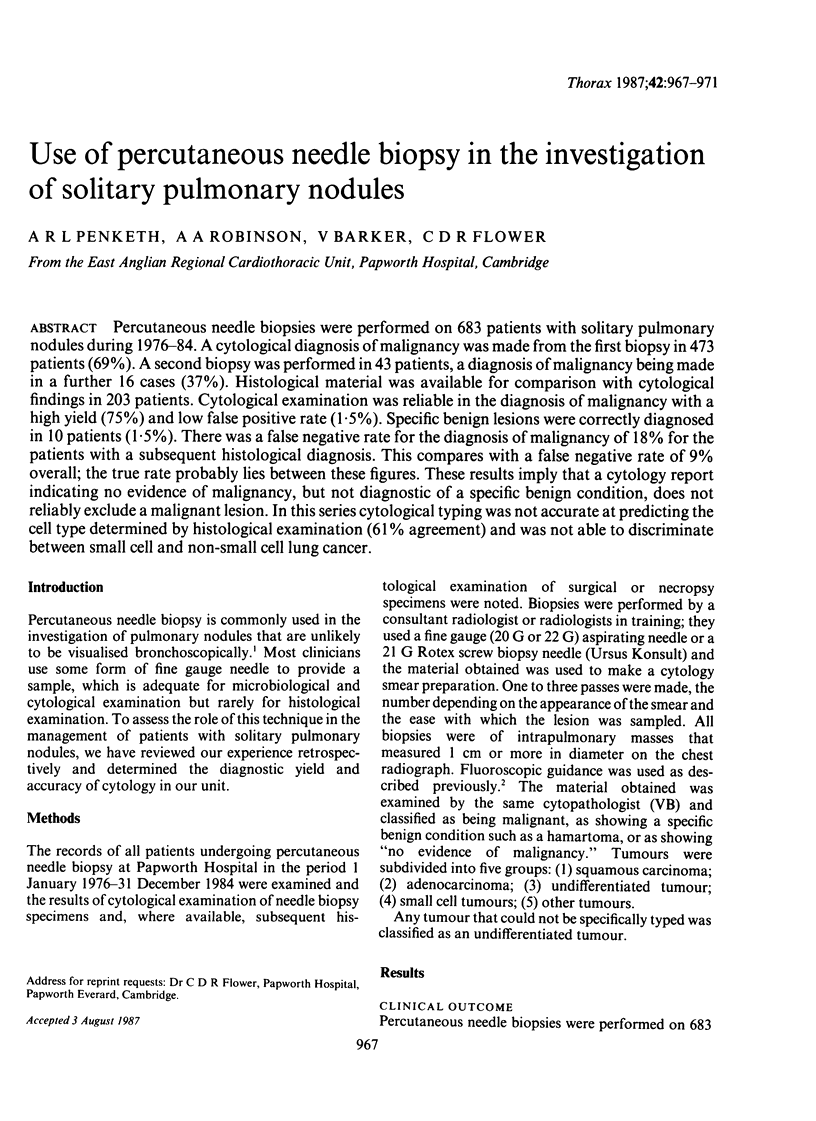
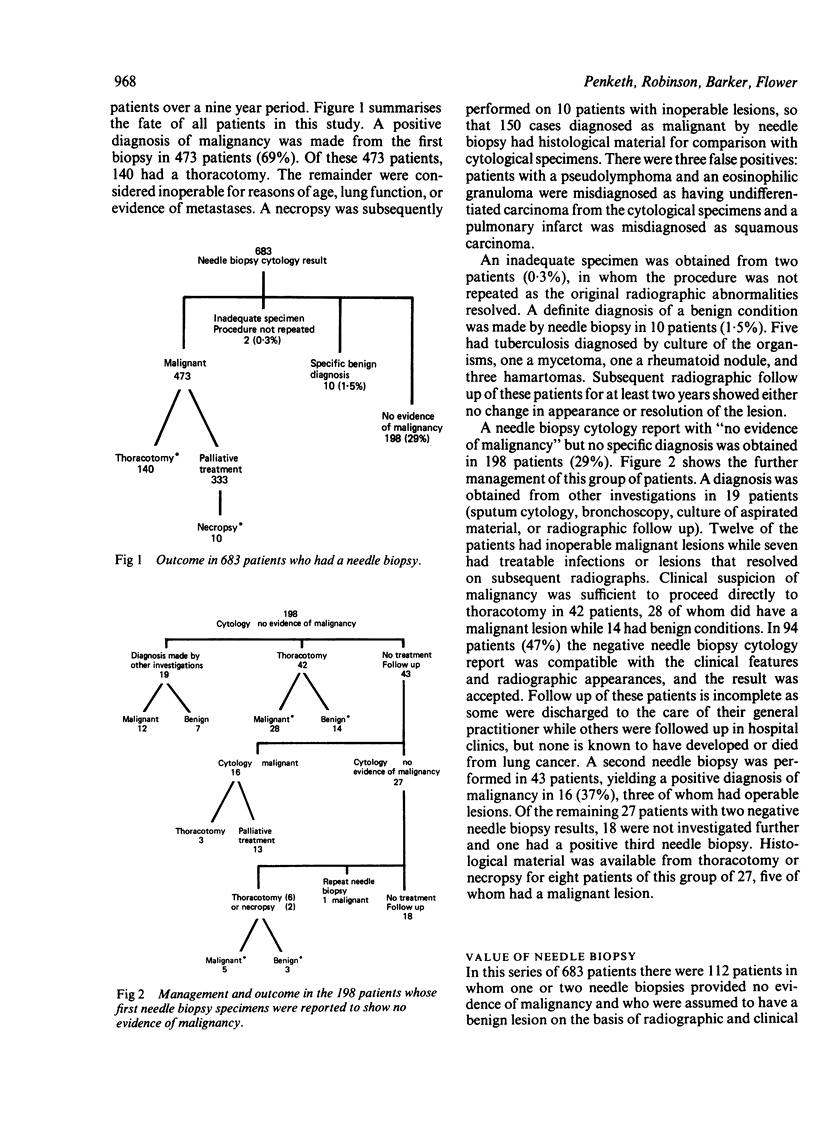
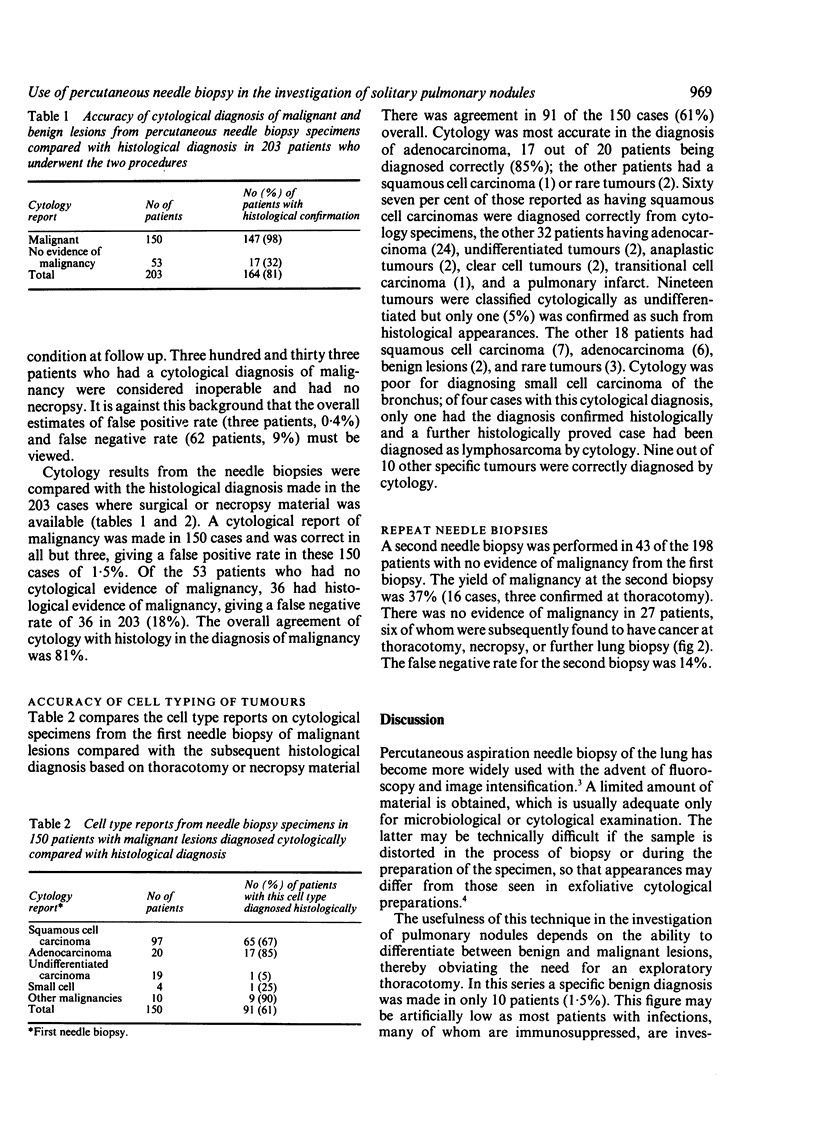
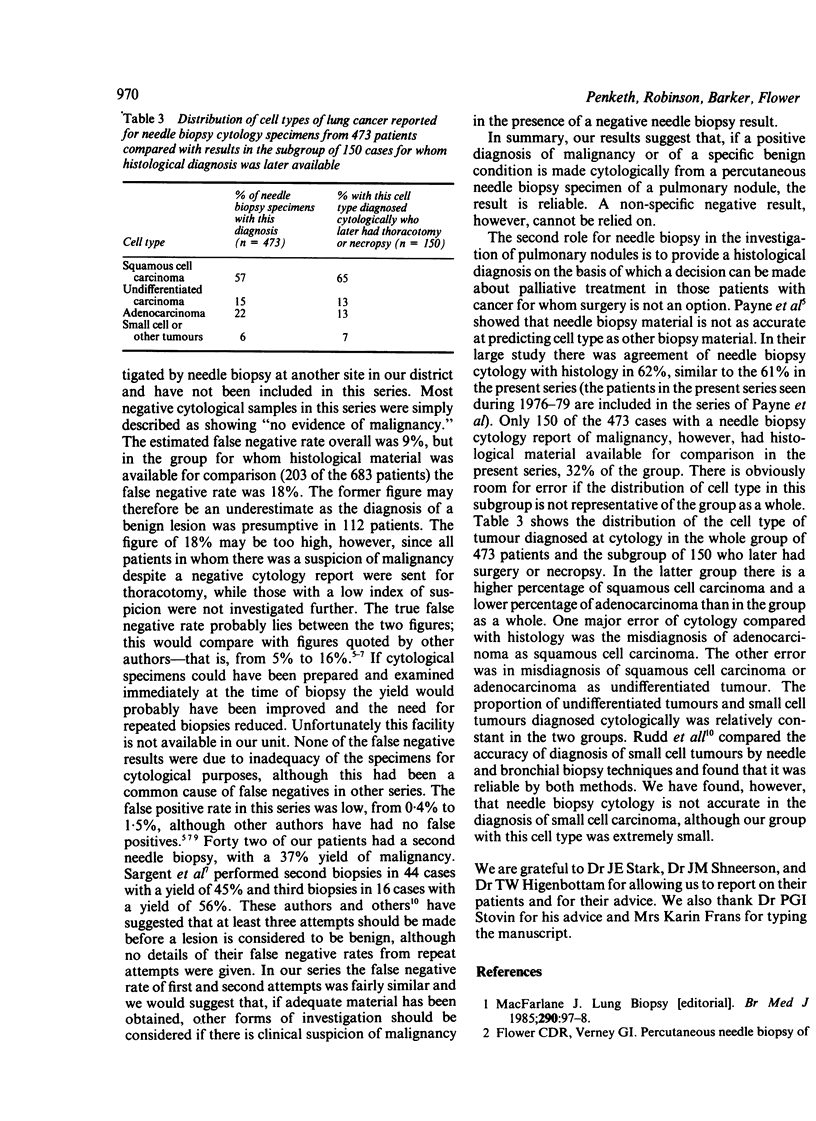
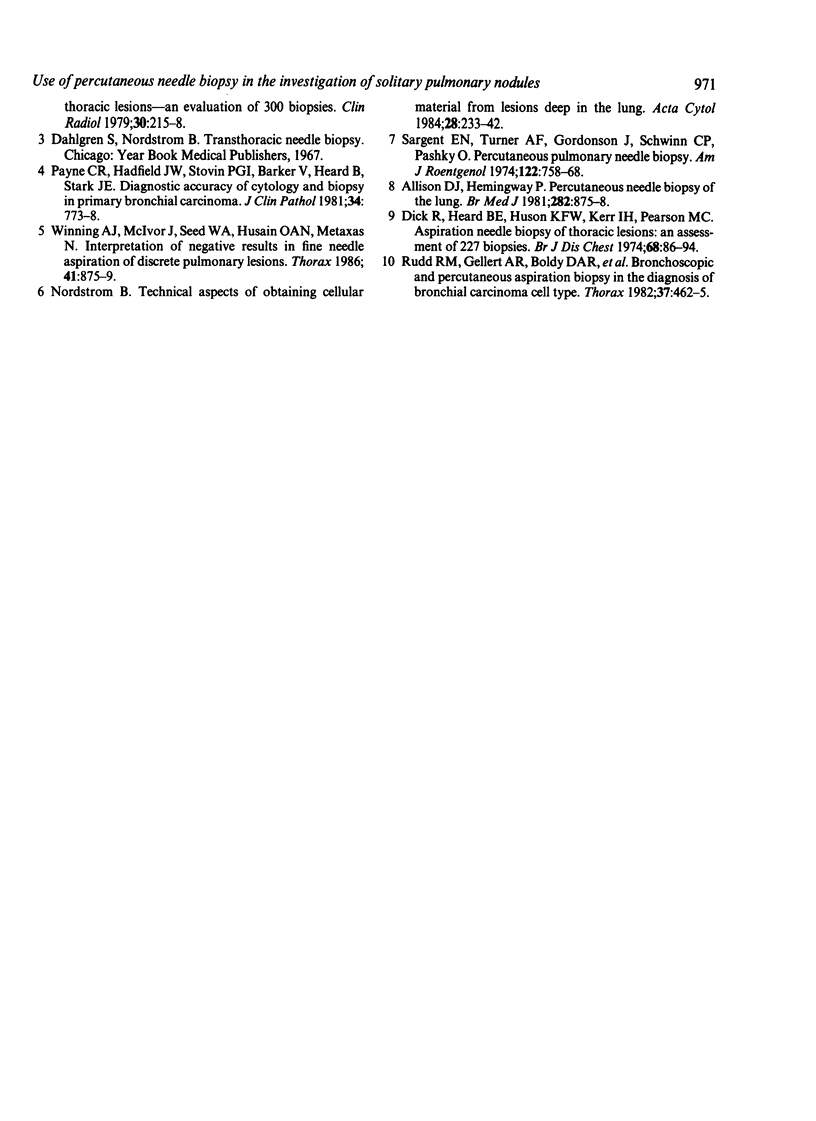
Selected References
These references are in PubMed. This may not be the complete list of references from this article.
- Dick R., Heard B. E., Hinson K. F., Kerr I. H., Pearson M. C. Aspiration needle biopsy of thoracic lesions: an assessment of 227 biopsies. Br J Dis Chest. 1974 Apr;68(2):86–94. doi: 10.1016/0007-0971(74)90020-5. [DOI] [PubMed] [Google Scholar]
- Flower C. D., Verney G. I. Percutaneous needle biopsy of thoracic lesions--an evaluation of 300 biopsies. Clin Radiol. 1979 Mar;30(2):215–218. doi: 10.1016/s0009-9260(79)80166-x. [DOI] [PubMed] [Google Scholar]
- Macfarlane J. Lung biopsy. Br Med J (Clin Res Ed) 1985 Jan 12;290(6462):97–98. doi: 10.1136/bmj.290.6462.97. [DOI] [PMC free article] [PubMed] [Google Scholar]
- Nordenström B. E. Technical aspects of obtaining cellular material from lesions deep in the lung. A radiologist's view and description of the screw-needle sampling technique. Acta Cytol. 1984 May-Jun;28(3):233–242. [PubMed] [Google Scholar]
- Rudd R. M., Gellert A. R., Boldy D. A., Studdy P. R., Pearson M. C., Geddes D. M., Sinha G. Bronchoscopic and percutaneous aspiration biopsy in the diagnosis of bronchial carcinoma cell type. Thorax. 1982 Jun;37(6):462–465. doi: 10.1136/thx.37.6.462. [DOI] [PMC free article] [PubMed] [Google Scholar]
- Sargent E. N., Turner A. F., Gordonson J., Schwinn C. P., Pashky O. Percutaneous pulmonary needle biopsy. Report of 350 patients. Am J Roentgenol Radium Ther Nucl Med. 1974 Dec;122(4):758–768. doi: 10.2214/ajr.122.4.758. [DOI] [PubMed] [Google Scholar]
- Winning A. J., McIvor J., Seed W. A., Husain O. A., Metaxas N. Interpretation of negative results in fine needle aspiration of discrete pulmonary lesions. Thorax. 1986 Nov;41(11):875–879. doi: 10.1136/thx.41.11.875. [DOI] [PMC free article] [PubMed] [Google Scholar]


